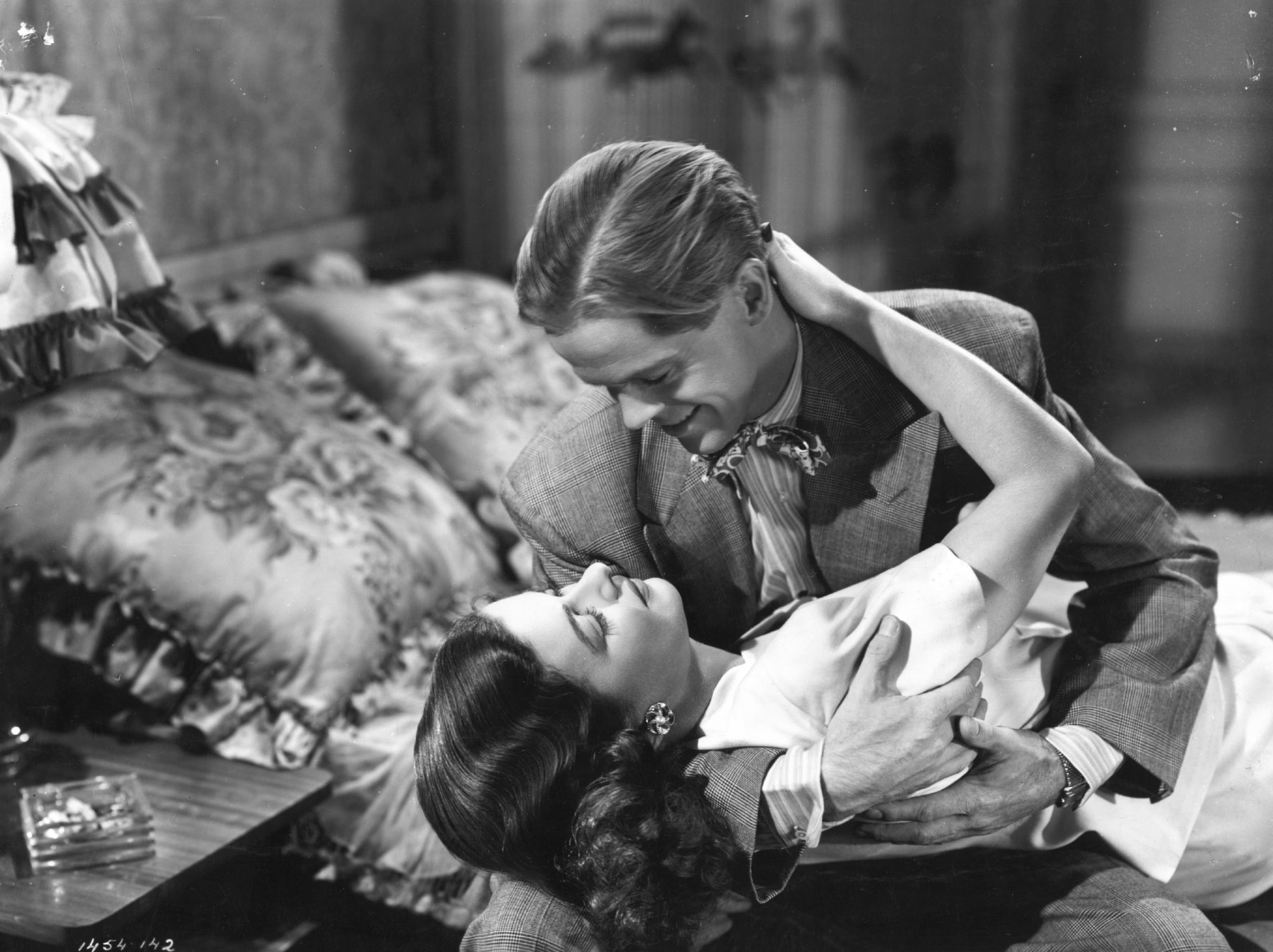The narratives of both Jean Renoir’s La Chienne and Fritz Lang’s Scarlet Street are difficult to watch, given that the viewer is privy to the web of deceit being spun between characters, knowing full-well it will inevitably spell impending doom. The ineffectual nebbishy cashier and protagonist, Maurice Legrand (Michel Simon) in La Chienne and Chris Cross (Edward G. Robinson) in Scarlet Street, demonstrates a level of cowardice and naiveté in grown men that is simply unforgivable, thereby resulting in a fate that must be tragic. It is not surprising that character identification in either film is almost impossible considering the wretchedness of its many characters.
Lang’s version for this reason, focused as it is on acute character experiences that are extremely morbid and pathetic, tends to paint the picture as a maudlin affair, whereas Renoir’s La Chienne—with characters who are for the most part, equally pathetic—depicts a fucked-up sociocultural milieu in which Legrand is actually freed existentially, for the most part, by losing his middle-class status, his wife and mistress. As for losing the ability to perform his art, well that’s something the bourgeois can worry about. Legrand is shown as being more preoccupied with the freewheeling life of a bum—not unlike Renoir’s Boudu Saved from Drowning, released a year later and also starring Simon—than with his stolen art work at a gallery. Nor is Legrand wracked with the guilty conscience of Cross that Lang so superbly depicts at the end ofScarlet Street. La Chienne exposes Legrand for who he really is, even if French society is too blind to see it. Legrand is not only a coward whose inability to gain mastery over people and situations when needed robs him of his privilege, but one whose desperation leads to animalistic and vile actions that forever taint his soul as well as his class. Legrand’s diddering inferiority as well as his middle-class status makes him an impossible suspect for Lulu’s murder, whereas Dédé’s criminal background, low status, brutishness and foul mouth makes him the perfect culprit. But by committing sins that are deemed morally corrupt, Legrand is robbed of his status, although his tumultuous experiences have led him to no longer care. He’s much happier in the simplicity of a daily pursuit of sustenance and basic survival.
What Legrand, Cross and their peripheries reveal is the startling cultural differences not only between France and America, but their respective time periods. Released in 1931, La Chienne was Renoir’s second sound film, and was integral in helping the French auteur learn how to express his critiques of French society through his layered and rich soundscapes using a new cinematic invention. Renoir accuses the middle-class everyman of being susceptible to Legrand’s fate, whereas Lang articulates a prescient expression of inferiority that would come to preoccupy Hollywood in the coming post-war years: the anxieties of masculinity (or a lack thereof) that would inevitably shape a genre that Scarlet Street also helped to define with its lighting, rain-splattered streets and femme fatale: the film noir.
Given Renoir and Lang’s shared status as auteurs, it is interesting to see how their respective talents help to craft these incredibly unique works that share the same story. Sound is especially integral in the works of both Renoir and Lang, and one would be hard-pressed to find two directors with such opposite approaches in its employment. Lang’s experience with German Expressionism helped him to invoke particular moods and tonal continuity. Every sound is a calculated and singular moment in time, and many are often repeated for psychological effect. Scarlet Street’s ending is so effective in establishing Cross’s insanity with its repetitive use of music and Kitty’s derisive cackling that other elements—his failed attempt to hang himself, the flashing light outside Cross’s apartment—seem forced and unnecessary by contrast.
Renoir was equally fascinated with sound, but for completely different reasons. Unlike Lang, who sculpted precise cinematic signatures through silence, staccatos, repetition and minimalism, Renoir wanted a full-fledged orchestra, a cacophony of people and objects that stirred in their settings and that would contribute to the depiction of a hypocritical and blind world, one in which street music could distract a crowd from the shrieks of Kitty’s murder taking place only a few feet away, and the escape of its killer. The result was not intended to bleed decibels—indeed Renoir put as much effort into orchestrating his layering of soundscapes as Lang did in refining his pointed expressions—but rather to show the labyrinthine world in which Legrand lived and suffered. In one scene, the sounds of a child’s piano practice streaming in from a nearby window becomes indelibly linked to the innocence Legrand once had. But in his pathetic middle age, Legrand steals his wife’s savings as casually as he shaves his face, all-the-while glancing and fixating upon an open window in which the child can be seen playing the piano. It’s a window into another world, but one that Legrand surely experienced at some point in his life. Legrand’s guilelessness couldn’t have been a defect in his early life when children are naturally naive, and such traits would have allowed him to gain a humane sensitivity that would help him learn the craft of an art like music, or in his case, painting. This beautiful thematic association between two people who don’t know each other is established seamlessly through the annexation of nearby sounds and a visualization of spaces, which are real and physical, but also connotative of idealized spaces and visions.
In many respects, La Chienne achieves a degree of removed sympathy for all of its characters—even the duplicitous gold digger Lulu—that Scarlet Street does not, and that’s because the film so successfully and explicitly marks the larger, questionable jungle in which people like Legrand, Lulu and Dédé exist. The needs and desires of so-called regular folk are linked to criminals, even if their strategies in gaining what they want are different. Take, for example, Lulu’s of the house and household appliances Legrand has rented for her, to her envious friend. Lulu wants a loving man who can provide for her, but she is too smart and young for Legrand, too stupid and weak for Dédé, and too destitute to realize the error of her ways and to find someone better. This is not to deny the immense emotional tragedy at the core of Scarlet Street. There would have been very few American filmmakers at the time who could have balanced the woes of such a pathetic character caught up in unfortunate circumstances—indeed, Ernst Lubitsch gave up trying to rework a remake for La Chienne—but in spite of that, Cross’ extreme emasculation and Kitty and Johnny’s extreme wickedness are frequently too condemning and imposed. La Chienne may have the more damning title—it translates as “The Bitch”—but it scatters the blame of moral corruption across systemic failures, and as a result, the film feels more nuanced. In Scarlet Street, tragedy is spooky and grisly, whereas in La Chienne it’s nearly beautiful in its necessity.

